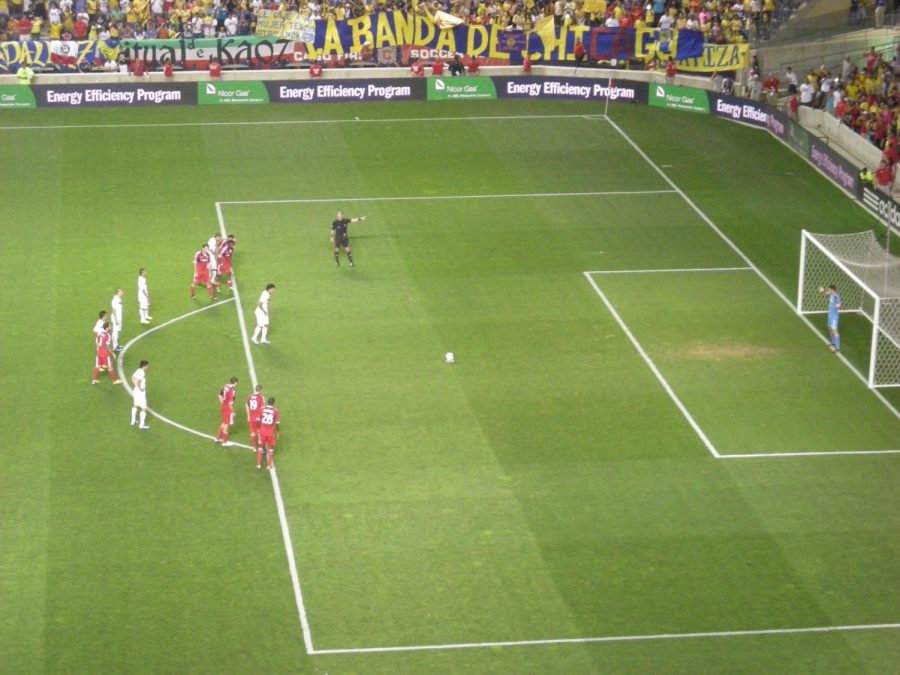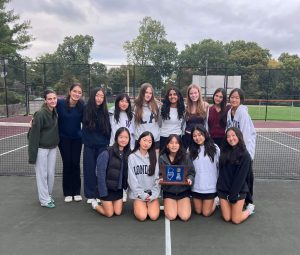Penalty Kicks: Skill or Psychology?
December 16, 2022
Step by step, you walk up to the penalty spot with the ball, wanting—needing—to bring home a victory for your country. So silent are the crowds in the stadium, players on the pitch, fans at home biting their nails, pulling their hair, pausing their lives to watch this moment, the make or break of your career. Which type of shot will brand you as a World Cup hero or villain— a lower left corner ping or an upper right ninety? As history continues to be made in the 2022 Fifa World Cup hosted by Qatar, it’s clear that the “simple” penalty kick is, indeed, much more complicated than it seems.
There are countless ways to take penalty shots, the techniques for which are often taught to players at a young age. While gametime shooting is usually performed on the run, penalty shots are executed in a standstill position, therefore, requiring wit, precision, and most of all, an extreme ability to handle mental pressure. Although the probability of a goalkeeper saving a penalty shot is, in fact, a low 18%, many players crack under pressure—even professionals. Most believe that the goalkeepers feel the most pressure, but because of these low chances, the true burden lies on the shooters who feel they should make such an “easy” goal. With the privilege of qualifying for the World Cup—arguably the most popular sporting tournament bringing countries together once every four years—comes an inconceivable amount of pressure that not all stars can handle, even at the peak of their careers. So, players do the one thing they can in order to avoid missing their shot if a game were to result in a penalty shootout: practice.
Imagine being assigned a thousand penalty kicks for homework by one of your gym teachers! Well, that became a reality for the Spain men’s national team when Luis Enrique, Spanish head coach and former professional player, gave each of his players the task of shooting one thousand penalty kicks with their individual clubs a couple months before the World Cup tournament. Although many expected Spain to move on to the quarterfinals, it was Morocco who defeated the team in a dramatic Round of 16 penalty shootout in which Moroccan players Abdelhamid Sabiri, Hakim Ziyech, and Achraf Hakimi scored three penalties and Spanish players Pablo Sarabia, Carlos Soler, and Sergio Busquets failed to make one. Moroccan player Hakimi used a special technique called the “panenka,” invented by Czechoslovakian player Antonín Panenka in the 1976 UEFA European Championship finals against West Germany. With the “panenka,” the player gives the ball a light chip towards the center of the goal instead of the right or left. Nevertheless, no amount of practice can guarantee a penalty goal; what may seem like a routine procedure during practice becomes a pure psychological battle on the pitch.
Another difficult, but effective technique enforced by some of our favorite players is the “stop” style where the shooter takes a pause, hopping before contacting the ball, sees which direction the goalkeeper goes, and ultimately aims for the opposite direction. This is one of Neymar Jr.’s signature moves; however, the Brazilian talent wasn’t able to show it off last Friday when Brazil’s quarterfinal game against Croatia boiled down to a decisive penalty shootout where crafty Croatian captain Luka Modrić led his team to victory. One of the Brazilian players, 21-year-old Rodrygo Silva de Goes, missed his penalty despite playing for one of the highest level clubs, Real Madrid, demonstrating that the result truly depends on the player’s mentality in the moment. Enraptured by the thrill, viewers don’t realize that this is the point where a physically exhausting game becomes psychologically excruciating for the players. While we have been posting the wins and losses of our favorite teams on social media, these footballers are feeling roller coasters of emotions in real-time. During England and France’s “revolutionary” quarterfinal last weekend, I remember snapping a picture of Britain’s beloved Harry Kane during his first penalty shot, which he made, evening the score to 1-1 against France. However, after missing his second penalty shot and a chance to tie with France once again, the disappointment I, as a fan, felt must have been infinitely miniscule in comparison to Kane’s.
In a tournament like the World Cup, penalty kicks ultimately come down to a player’s ability to remain calm and collected in the midst of an overwhelming scene. Proving to be a testament of mental strength rather than skill, the penalty shootout is an art only few players can paint, especially with a potential World Cup victory resting at their feet.
All our anticipation and predictions will be answered this Sunday when we see who takes home a victory in the 2022 Fifa World Cup finals. Maybe, it will even end in a penalty shootout!

















































































































































